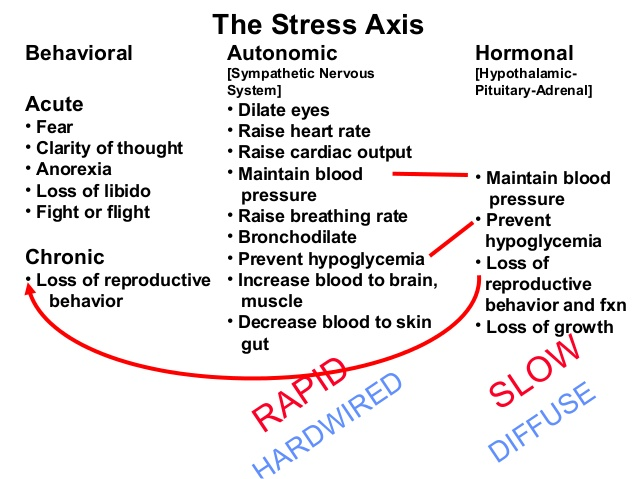Effective Stress Management and Well-being through Yoga
Stress is probably the single most important factor in most forms of disease today. According to modern science, stress is defined as the response to a demanding situation. It is not the situation itself but the reaction and action we acquire when facing stressful situations. Constant stress is directly debilitating to both mind and body, and leaves the body susceptible to disease. Practicing Yoga correctly not only heals the emotional and physiological damage, but provides access to inner strengths.
Contents:
Medical science has taken giant strides forward, achieving excellence in diagnosis and surgical procedures. However, the science tends to focus on the disease rather than on the person as a whole. On the other hand, yoga employs a fully integrated approach; it looks at the human being in respect to both the internal and external environments. Yoga provides a holistic insight by examining the physical condition in its totality, and by providing the tools to improve overall well-being.

Stress Susceptibility
Varying levels of stress is pretty well an unavoidable part of modern life. We all suffer from mild anxiety from time to time, but when stress becomes chronic, it has tremendous side-effects on our health and immune system. The impact of constantly draining energy resources (such as the adrenal glands) and keeping the body in a constant state of stress (with associated elevated cortisol levels) leads inevitably to the progression of disease. The effects of anxiety are magnified when the body is not mobilised into appropriate action, and the tension is constantly held in areas susceptible to capture and transform stress.
The areas of the body most commonly affected include the following:
- neck
- shoulders
- intercostal muscles
- lower back and
- hips
Stress, Breath, Mind and Body
In prolonged states of mild or exacerbated anxiety, the breath remains constricted for much of the time. This causes breathing difficulties by decreasing lung capacity, which in turn leads to a disharmony in the body - and so too in the mind.
The stress and stress-induced disorders like hypertension and angina are fast growing epidemics and the bane of modern society. The holistic science of yoga is the best method for prevention as well as management of stress and stress-induced disorders. Numerous studies have shown yoga to have an immediate down-regulating effect on both the hypothalamic-pituitary-adrenal axis (HPA) axis responses to stress. The effectiveness of yoga for stress management is well established. [1]
The proven benefits of yoga have led to its inclusion as an integral component in the medical management of numerous disorders.
Scientific Evidence for impact of Yoga on Stress

Studies have suggested that yoga has an immediate quieting effect on the HPA response to stress. While the precise mechanism of action has not been determined, it has been hypothesized that some yoga exercises cause a shift toward parasympathetic nervous system dominance, possibly via direct vagal stimulation.[2] In a study following an eight week yoga intervention in depressed patients Shapiro et al.[3] noted significant reductions in low-frequency heart rate variability, which is a sign of sympathetic nervous system activation. Regardless of the pathophysiologic pathway, yoga has been shown to have immediate psychological effects: decreasing anxiety [4,5,6,7] and increasing feelings of emotional, social, and spiritual well-being.[8]
Yoga Nidra - deep relaxation
When it comes to stress management, one of the golden techniques to introduce in a relaxation program is yoga Nidra (deep relaxation). Yoga Nidra helps restore the natural health of the body’s entire nervous system. By the physical and mental action and practice of “let go”, we allow our body to find space to listen and visualize inwardly.
Accessing your inner strength
Yoga helps to access an inner strength that allows you to face the sometimes-overwhelming fears, frustrations, and challenges of everyday life. A few Yoga exercises practiced daily (especially if they are done just prior to meditation) help to regulate the breath and relax the body by gently releasing tension from the large muscle groups, flushing all parts of the body and brain with fresh blood, oxygen, and other nutrients, and increasing feelings of well-being.
Meditation and other stress-reduction techniques have been studied as possible treatments for depression and anxiety. Gaining popularity since the 1970s, the practice of yoga has become increasingly popular in the last 10 years. Available reviews of a wide range of yoga practices suggest they can reduce the impact of exaggerated stress responses and may be helpful for both anxiety and depression. Yoga mainly acts by down-regulating the HPA axis that would normally trigger as a response to a physical or psychological demand (stressors), leading to a cascade of physiological, behavioural, and psychological effects. These response to stressful stimuli are primarily as a result of the release of cortisol and catecholamine (epinephrine and norepinephrine)[9].
The role of Self-acceptance
Previous research has shown that the effects of mindfulness-based interventions (such as yoga) and increased trait mindfulness are associated with reduced stress. Self-acceptance is found to partially mediate the relationship between mindfulness and stress. [11]
Negative feelings and self-judgments are stressful experiences that can be a route to 'isolation'. One of the most important effects or responses to chronic stress is exhaustion: Chronic stress places a constant load on the Neuroendocrine adaptive mechanisms leading to distortion in the homeostatic mechanism, thus weakening your response to environmental challenges and causing damage to our well-being, with subsequent appearance of disease.
Constant hypervigilance comes at a high price
As a result of chronic stress and anxiety, people react in a way that changes our natural rhythm. Gradually we feel more inclined to follow an unnatural lifestyle, becoming victims of various psychosomatic disorders such as a decrease in the normal immune system response, sleep disturbances, depression, overeating, raised blood pressure and heart rate, obesity, diabetes and even suicidal thoughts. Over time, the constant state of hypervigilance resulting from repeated firing of the hypothalamic-pituitary-adrenal (HPA) axis and sympathetic nervous system can lead to dysregulation of the system and illnesses such as cardiovascular disease.
Studies show that yoga decreases levels of salivary cortisol [12,13], blood glucose [14,15], heart rate and systolic and diastolic blood pressure [16,17]. Also, studies suggest that yoga reverses the negative impact of stress on the immune system by increasing levels of immunoglobulin A [18]
The Stress Axis

The importance of the breath in patients with Anxiety
Anxious breathing occurs in the upper chest by not allowing the diaphragm to contract fully. People who suffer from anxiety are likely to develop a chronic form of muscle restriction affecting, as a consequence, the abdominal muscles. Normal breathing can then become impaired. Yogic breathing or diaphragmatic breath is an effective method of combating anxiety and panic attacks.
Beyond the awareness of your breath, yoga also teaches awareness of thought patterns helping you to reconnect with the root cause of your stress i.e. your thoughts.
Yoga Impact on Mental Health - "The Seed in the Mind"
Studies have shown that a combination of pranayama, asana and meditation can significantly reduce anxiety in psychiatric patients. Moreover, it was found that yoga is as effective as tranquilizers. [10]
Yoga is a science for the integrated and holistic development of our physical, mental as well as moral and spiritual aspects. The philosophy of Yoga is practical and definitely applicable in our day-to-day living. The yogic concept of health and disease enables us to understand that the cause of physical disorders stems from the seed in the mind and beyond. Various aspects of Yoga help in the prevention and management of stress.
Following the philosophy of Yoga as a ‘way of life’ helps to reduce the levels of mental, physical and emotional stress. Moreover, yoga might help you to understand the root cause of illness and malaise, and to react wisely to whatever stressor you might face in life.
1. Kirkwood G, Rampes H, Tuffrey V, Richardson J, Pilkington K, Ramaratnam S. Yoga for anxiety: A systematic review of the research evidence. Br J Sports Med. 2005;39:884–91. [
PMC free article] [
PubMed]
2. Innes KE, Bourguignon C, Taylor AG. Risk indices associated with the
insulin resistance syndrome, cardiovascular disease, and possible protection with yoga: A systematic review. J Am Board Fam Pract. 2005;18:491–519. [
PubMed]
3. Shapiro D, Cook IA, Davydov
DM, Ottaviani C, Leuchter
AF, Abrams M. Yoga as a complementary treatment of depression: Effects of traits and moods on treatment outcomes. 4. Michalsen A, Grossman P, Acil A, Langhorst J, Ludtke R, Esch T, et al. Rapid stress reduction and anxiolysis among distressed women as a consequence of a three month intensive yoga program. Med Sci Monit. 2005;11:555–61. [
PubMed]
5. West J, Otte C, Geher K, Johnson J, Mohr DC. Effects of Hatha yoga and African dance on perceived stress, affect, and salivary cortisol. Ann Behav Med. 2004;28:114–8. [
PubMed]
6. Gupta N, Shveta K, Vempati R, Sharma R, Vijlani RL. Effect of yoga based lifestyle intervention on state and trail anxiety. Indian J Physiol Pharmacol. 2006;50:41–7. [
PubMed]
7. Telles S, Naveen K, Dash M, Deginal R, Manjunath NK. Effect of yoga on self-rated
visual discomfort in computer users. Head Face Med. 2006;2:46. [
PMC free article] [
PubMed]
8. Moadel AB, Shaw C, Wylie-Rossett J, Harris
MS, Patel SR, Hall CB, et al. Randomized controlled trial of yoga among a multiethnic sample of breast
cancer patients: Effects on quality of life. J Clin Oncol. 2007;25:1–9. [
PubMed]
[9]Chandra, A.K., Sengupta, P., Goswami, H. and Sarkar, M. (2013) Effects of Dietary Magnesium on Testicular Histology, Steroidogenesis, Spermatogenesis and Oxidative Stress Markers in Adult Rats. Indian Journal of Experimental Biology, 51, 37-47.
10. N. Vahia. H.S. Doenjali., D.R, Jeste D.V et al Psychophysiologic therapy based on the concepts of Patanjali. American Journal of Psychotherapy, 1973, 557-651
11. Self-acceptance mediates the relashionship between mindfulness and perceived stress. Marcus A. Rodriguez1, 2, Wei Xu1, Xiaoming Wang1and Xinghua Liu1 1Beijing Key Laboratory of Learning and Cognition, Department of Psychology, Capital Normal University, Beijing. 2Department of Psychology and Neuroscience, Duke University
12. Effects of Hatha yoga and African dance on perceived stress, affect, and salivary cortisol. West J, Otte C, Geher K, Johnson J, Mohr DC. Effects of Hatha yoga and African dance on perceived stress, affect, and salivary cortisol. Ann Behav Med. 2004 Oct; 28(2):114-8.
18. Evaluation of a Yoga-based stress management training for teachers: effects on immunoglobulin A secretion and subjective relaxation. J Mediation Mediation Res 01/2003; 3:59-68.
Sherezade Ruano











